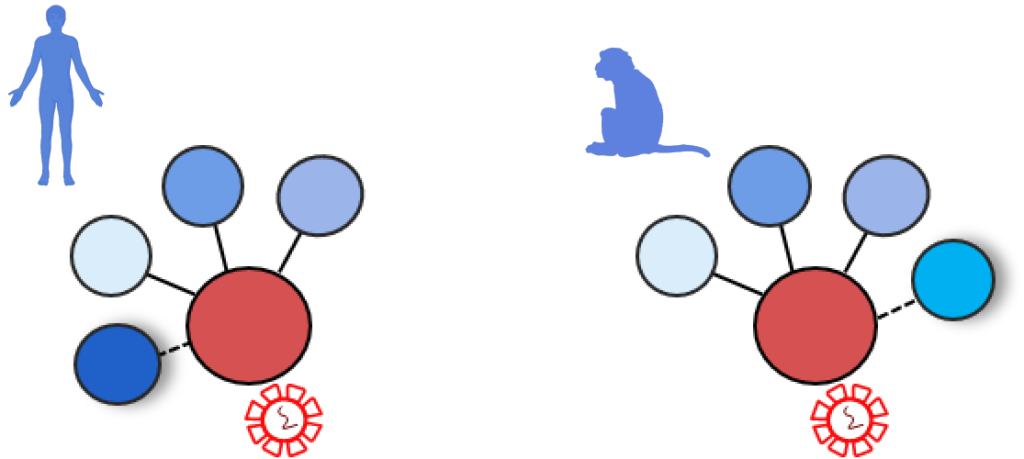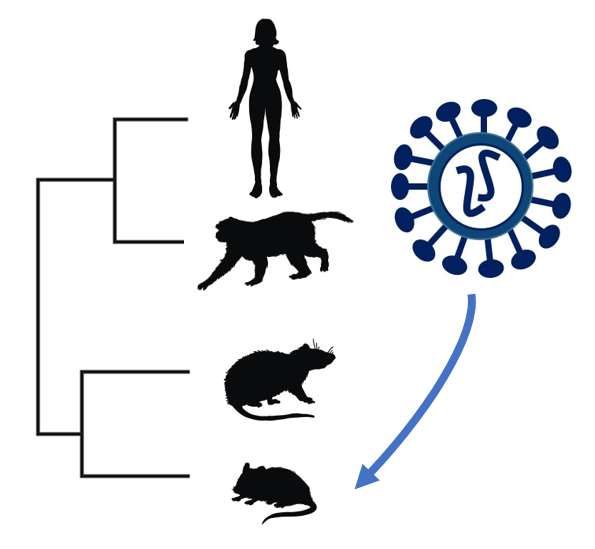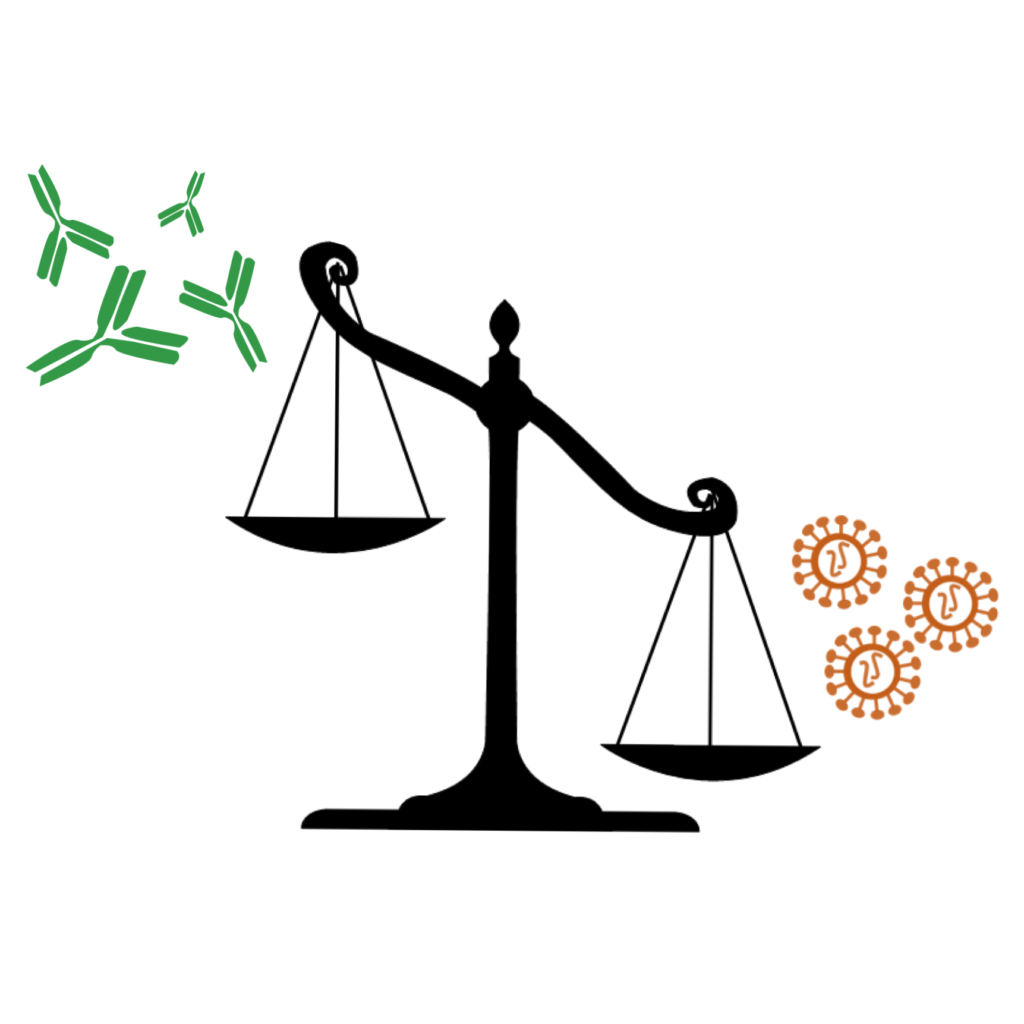Evolution of host–virus protein–protein interactions
When viruses invade cells, they must interact with numerous host proteins to dampen host defenses and to modulate cellular pathways for successful replication. We study the evolution of these host-virus interactions across different host and viral species, focusing on the functional and biophysical characteristics that enable or constrain the evolution of these interactions. Our findings regarding constrained host protein interfaces targeted by viral proteins can be found here [Shuler 2022], while our investigations on the evolution of interface regions on viral protein surfaces can be found here [Hagai 2014; Gitlin 2014; Dolan 2021].

Evolution of immune systems in vertebrates
Humans and animals differ in their susceptibilities to infections. For example, bats can harbour some of the deadliest viruses to humans, such as Ebola and SARS, without getting ill. By comparing the immune response across species in homologous cell systems, we study how humans differ in their ability to resist pathogens from other species, and find genes that are involved in species-specific resistance to various pathogens. Some of our findings regarding the bat immune system can be found here [Schneor 2023; Levinger 2023], and regarding differences in immune responses between primates and rodents can be found here [Hagai 2018; Schneor 2024].

Evolution of immune gene duplication
Many innate immune gene families display rapid rates of gene gain and loss in the course of vertebrate evolution. We thus investigate the functional consequences of the duplication of specific immune gene families and how they may be adaptive for the host in its response to infection. For example, we recently employed comparative transcriptomics and phylogeny-based approaches, to study the consequences of the massive duplication of TNFRSF14 in the Egyptian fruit bat genome [Schneor 2023]. We also study regulatory characteristics of gene duplicates, and how they are related to successful fixation of genes following duplication [Fraimovich 2023].

The balance between pathogen inhibition and a dysregulated immune response
When pathogens invade our body, the immune system must respond quickly and efficiently to control the infection. A strong response can inhibit pathogen replication but can also cause tissue damage to the host. We study how this response has evolved to be effective but restrained by looking at the evolution of genes that control the immune response and their involvement in conditions where the immune system overreacts and causes damage. Some of our findings regarding this can be found here [Hagai 2018; Kumasaka 2023].

